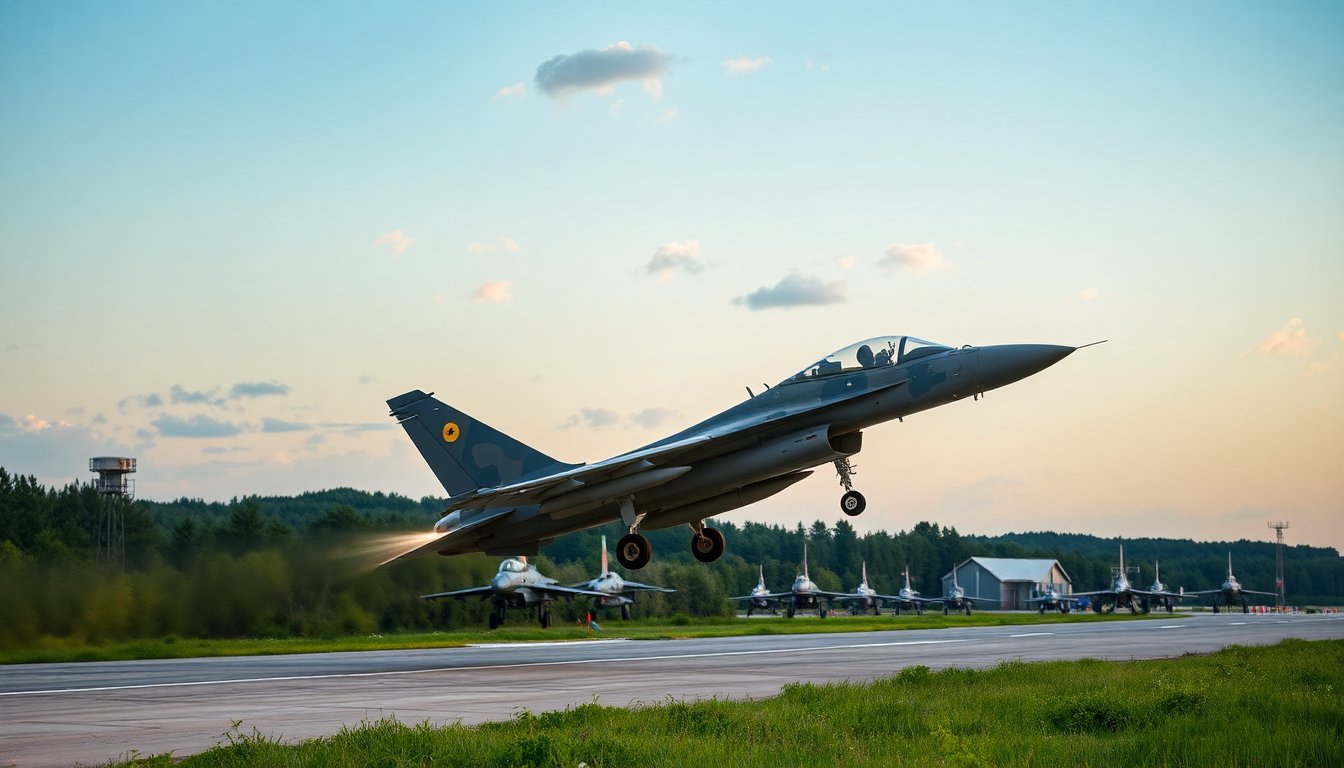Table of Contents
Recent developments in Eastern Europe underscore the escalating military tensions surrounding the ongoing conflict between Russia and Ukraine. Romania has implemented proactive measures to protect its airspace by scrambling fighter jets after detecting a drone breach during a Russian attack on Ukraine. This incident highlights the precarious security situation in the region and reflects the broader implications of the conflict for NATO allies.
Overview of the Situation
The Romanian Ministry of National Defence confirmed that on Saturday, two F-16 fighter jets and two Eurofighters, part of a German air policing initiative, were deployed following the detection of a drone that had entered Romanian airspace. This action followed Poland’s military response, which included deploying aircraft and temporarily closing an airport in Lublin due to similar drone threats. These responses illustrate the heightened state of alert among EU nations bordering Ukraine, particularly after Poland successfully intercepted Russian drones earlier in the week.
Furthermore, the Romanian Defence Ministry reported that the drone was monitored until it vanished from radar near the village of Chilia Veche. National Defence Minister Ionut Mosteanu noted that the F-16 pilots were close to neutralizing the drone before it retreated into Ukrainian airspace, emphasizing the ongoing vigilance required in light of such incursions.
Regional Implications and NATO’s Response
This drone incursion has raised alarms not only in Romania but throughout Europe. Ukrainian President Volodymyr Zelenskyy remarked that the drone had penetrated approximately 10 kilometers into Romanian territory, operating for almost an hour within NATO airspace. Such actions have been interpreted as a clear escalation of hostilities by Russia, prompting calls for more stringent sanctions against Moscow.
Sweden has also condemned the drone breach, with Foreign Affairs Minister Maria Malmer Stenergard affirming support for Romania as a NATO ally. This incident precedes NATO’s announcement of enhanced defensive measures for Eastern Europe, particularly following the recent drone interceptions by Poland, marking a significant development in the alliance’s collective security strategy.
Broader Consequences and Future Outlook
The situation raises critical questions regarding the nature of Russian military actions and the potential for further escalation in the region. U.S. Secretary of State Marco Rubio expressed concern over the drone incursion, suggesting uncertainty regarding whether this was a deliberate act by Russia. The implications of these incidents extend beyond immediate military concerns, affecting geopolitical stability in Eastern Europe.
As European nations prepare for potential future incursions, the focus will likely shift toward enhancing collective defense measures and reinforcing airspace security. The ongoing situation serves as a stark reminder of the complex dynamics at play and the importance of maintaining readiness in the face of emerging threats.
In conclusion, the drone breaches in Romania and Poland signal a troubling escalation in military tensions linked to Russia’s actions in Ukraine. With NATO allies on high alert, the coming months will prove crucial in determining the trajectory of security in Eastern Europe and the broader implications for international relations.


